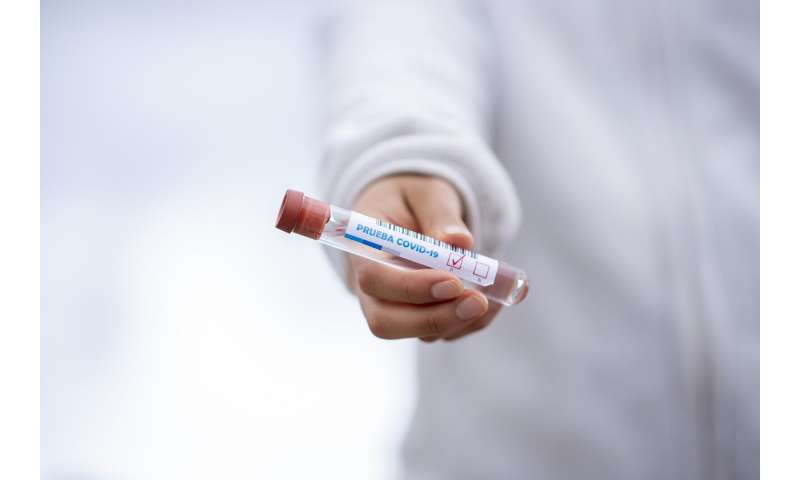
Many of the latest developments in the global coronavirus pandemic revolve around testing—for active infection and immunity. Diagnostic and antibody tests for COVID-19 and SARS-CoV-2 are flooding the market, as leaders and the public hope they might support safer strategies for re-opening.
Ping Wang, an associate professor of pathology and laboratory medicine, investigates diagnostics and diagnostic technology at Penn. Her clinical work focuses on making sure diagnostic results are delivered accurately and in a timely manner for patients at the Hospital at the University of Pennsylvania. Her research interests align with that, focusing on developing novel diagnostic tools—something particularly useful when facing a novel virus like SARS-CoV-2.
In the Q&A below, Wang discusses a rapid antigen test she is developing to diagnose COVID-19 in the community, using highly sensitive and portable technology.
Describe the test you’re building. How does it work, what is it for, what are your goals?
The assay we’re developing to detect SARS-CoV-2 is called a microbubbling digital assay—a novel technology we developed that can detect a very low amount of biomarkers in human samples, using images of tiny microbubbles on a smartphone camera as a “cue.” We actually developed this before the pandemic as a point-of-care tool for detecting protein biomarkers in a highly sensitive way. We have previously used it to detect prostate cancer recurrence in patients who had had prostatectomies. Patients with prostatectomies have prostate-specific antigen (PSA) levels close to zero, and we use this test to detect a very early rise in the PSA molecule, so we know there may be a biochemical recurrence of the cancer and can catch it very early. We’ve also used it to detect Beta human chorionic gonadotropin (Beta hCG), a hormone produced by the placenta during pregnancy, which can detect pregnancy very early, much earlier than traditional commercially available tests.
When the COVID-19 pandemic occurred, we saw that this assay would be a perfect fit for detecting the COVID-19 virus antigens during acute infection phase, when or before patients were symptomatic. It takes a lot of analytical sensitivity to detect such low levels of antigens, and our technology can offer much higher analytical sensitivity than most routine technology. For example, with PSA we can detect almost 200-fold lower concentration than what the clinical assay can do at the limit of detection.
What are the different COVID-19 tests and what are the differences? What is an antigen test, and how is it different from other diagnostic tests?
The diagnostic tests on the market now are nucleic acid tests. They rely on amplifying the RNA molecule of the virus [its genetic material]. They can detect the virus right before clinical symptoms, like a fever or cough, appear.
Our technology detects the viral antigen, or protein components of the virus. Given the high level of sensitivity of the test, it can detect low levels of antigen without amplification requirements.
We are hoping to use our technology first as a diagnostic assay to detect acute infection, and secondly, to describe the dynamics of viral antigens in the body to contribute to our understanding of the virus.

What is the timeline for this project? When do you think you might have something that could be used widely in the community and scaled to the public?
We have data showing we can detect SARS-CoV-2 antigens at very high sensitivity, levels that can compete with some rtPCR methods [current RNA detection methods]. We also are working to improve the format into something that’s portable, point-of-care, and user friendly, something you can use with a smartphone in your home or in a physician’s office. That will take probably several months.
Once we have a prototype we hope to find an industry partner to mass produce the units, as well as go into clinical studies to verify the clinical performance and eventually to submit to FDA approval.
Source: Read Full Article
